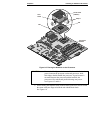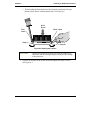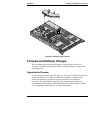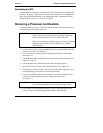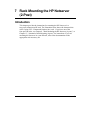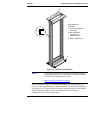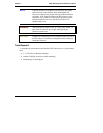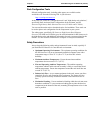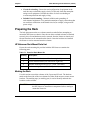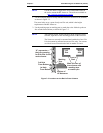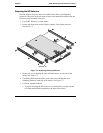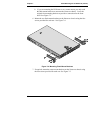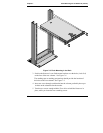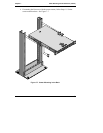
Chapter 7 Rack Mounting the HP Netserver (2-Post)
62
Rack Configuration Tools
HP rack configuration tools, including white papers, are available on the
worldwide web. Enter the following URL in your browser:
http://www.hp.com/netserver
At the Web site, search for "configuration tools" and "high density rack solutions,"
specifically Rack Assistant, Rack Configuration, Order Assistant, and HP
Netserver High Density Rack Solutions Overview (LP 1000r and LP 2000r).
You can read about the tools or download copies for installation. These tools can
be used to plan a rack configuration for the components in your system.
The white papers, specifically HP Netserver High Density Rack Solutions
Overview (LP 1000r and LP 2000r), provide rack information for HP Netservers in
the high density racks and additional information for rack systems not listed in this
manual. You will need this information to complete a rack system installation.
Safety Precautions
Always keep the following safety and environmental issues in mind, especially if
you install the HP Netserver in a non-HP rack environment:
• Optimum Operating Environment - The optimum operating conditions for
the HP Netserver is in an environmental controlled computer room with a
temperature range of 20 to 22° C (68 to 72° F) at 40 to 60% relative
humidity.
• Maximum Ambient Temperature - Ensure the maximum ambient
temperature does not exceed 35° C (95° F).
• Elevated Operating Ambient Temperature - The ambient operating
temperature within a multi-unit rack assembly is likely to exceed the room's
ambient temperature. Ensure the temperature around the rack itself does not
exceed 35° C (95° F).
• Reduced Air Flow - As you mount equipment in the rack, ensure you allow
enough air flow for safe operation of the equipment. The Netserver's fans
will only operate correctly if both front and rear of the rack allow free air
flow.
• Mechanical Loading - Uneven mechanical loading within the rack can cause
hazardous conditions. To prevent uneven loading plan to place the heaviest
components in the bottom of the rack, mounting all components as low in the
rack as possible.



